BUSHVELD BLUNDER
Two dead elephants raise questions on relocation from Mpumalanga ‘sanctuary’
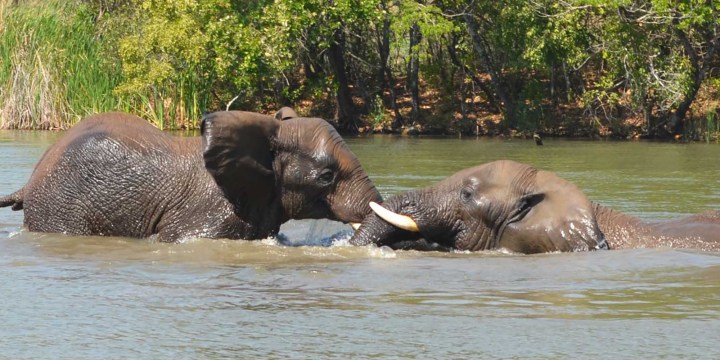
They were named Kasper and Kitso and charmed thousands of visitors to the Hazyview Elephant Sanctuary in Mpumalanga. The two animals were sedated before a move to the Western Cape, but never woke up. They have been buried without an autopsy. Why?
The deaths of two Mpumalanga elephants have provoked hand-wringing, controversy and accusations of negligence.
Their owner says he’s heartbroken — a former employee says that’s not possible because he’s heartless. The vet insists it was the worst day of his life. A provincial official reckons the relocation was probably mishandled. The trucker says he doesn’t know what went wrong. And a conservation organisation has tracked a history of questionable actions by both owner and vet.
There are clearly many sides to this story. You be the judge.
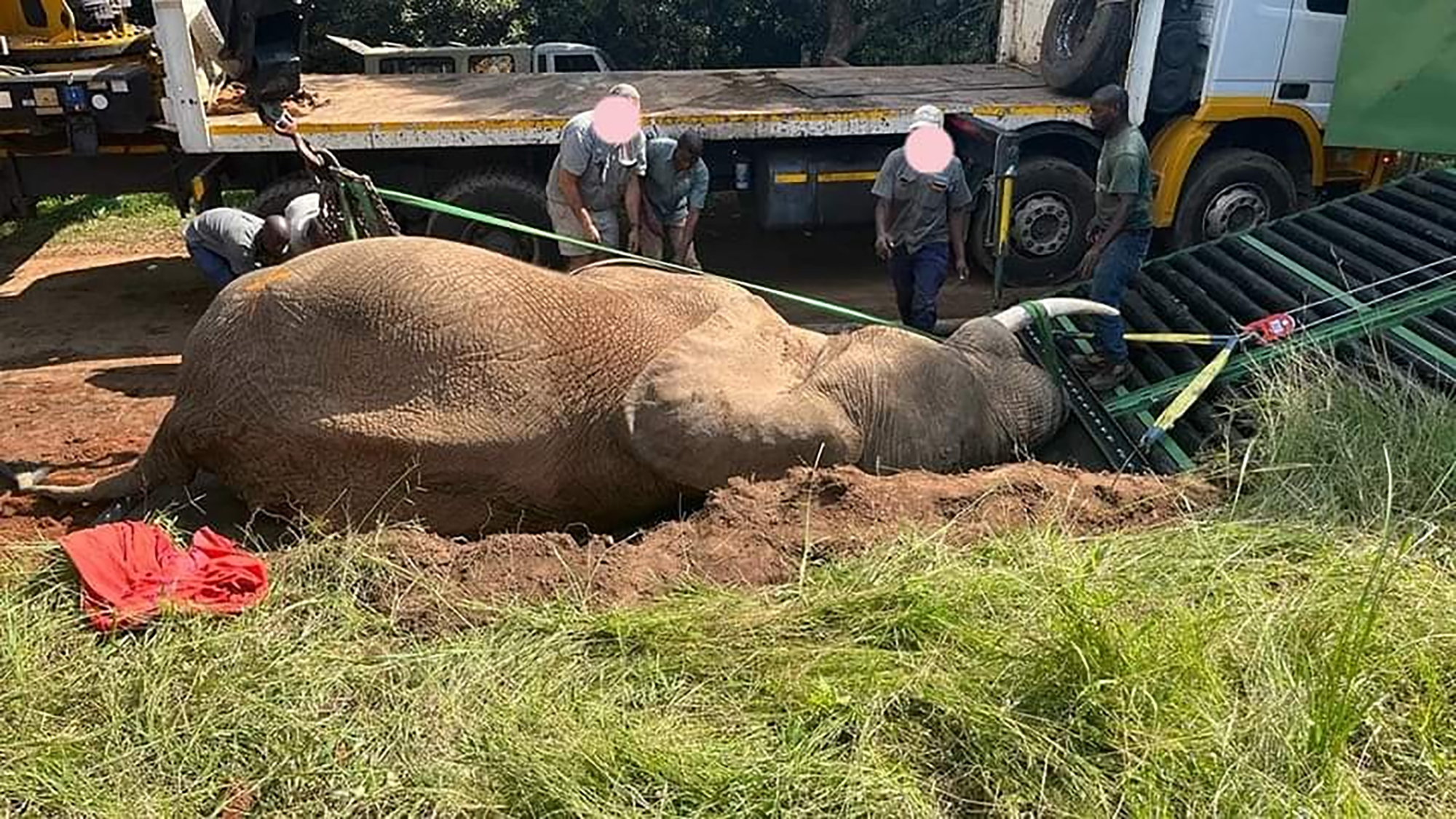
One of the elephants being dragged into a container with its trunk jammed under the grid. (Photo: Supplied)
Their owner, Craig Saunders, who claims he and his wife are heartbroken, says he hired an experienced vet to do the relocation but, not being a vet, can’t say what went wrong.
“They were darted, then didn’t get up again. They expired while they were down. They were down for quite a long time. The vet said, ‘don’t stress’. He’s darted thousands of elephants, that’s why I decided to use him.
“They’ve been with me for 20 years. It’s like losing a child.”
Saunders said both elephants were “contented” at Hazyview until 2018, when the neighbouring farm was sold, reducing the additional area used for traversing. Surrounding farms were being planted with macadamia and coffee.
“The land was bought by farmers and along with this came the use of pesticides and chemicals and helicopters, all of which are highly negative environmental factors. I, therefore, had no choice but to move the animals to safer territory with more control over their surrounding environment.”
Unions demand 10% increase in public sector wages, setting the stage for a bitter battle
Saunders planned to take them to his property, Lamloch, near Kleinmond in the Western Cape, where there was plenty of space and lots of water. Kaspar, he said, particularly loved water.
There are other views on what could or should have happened.
The two dead elephants were, until recently, used for elephant-back riding by tourists. Training these animals to allow intimate human interactions is universally acknowledged to be cruel, using unacceptable methods which include pain. So the idea of them being “contented” is questionable.
According to Michele Pickover, who runs the EMS Foundation, a social justice NGO, if Saunders loved his elephants so much, he should have rewilded them and not attempted to truck them off to his Kleinmond business, Elephant Ventures Africa CC.
She added that the area had a high veld fire risk, that the only water was a sensitive estuary and the area was unsuitable for elephants. For these and other reasons, both EMS Foundation and the Pro-Elephant Network had requested Cape Nature to refuse transfer permits to Lamloch.
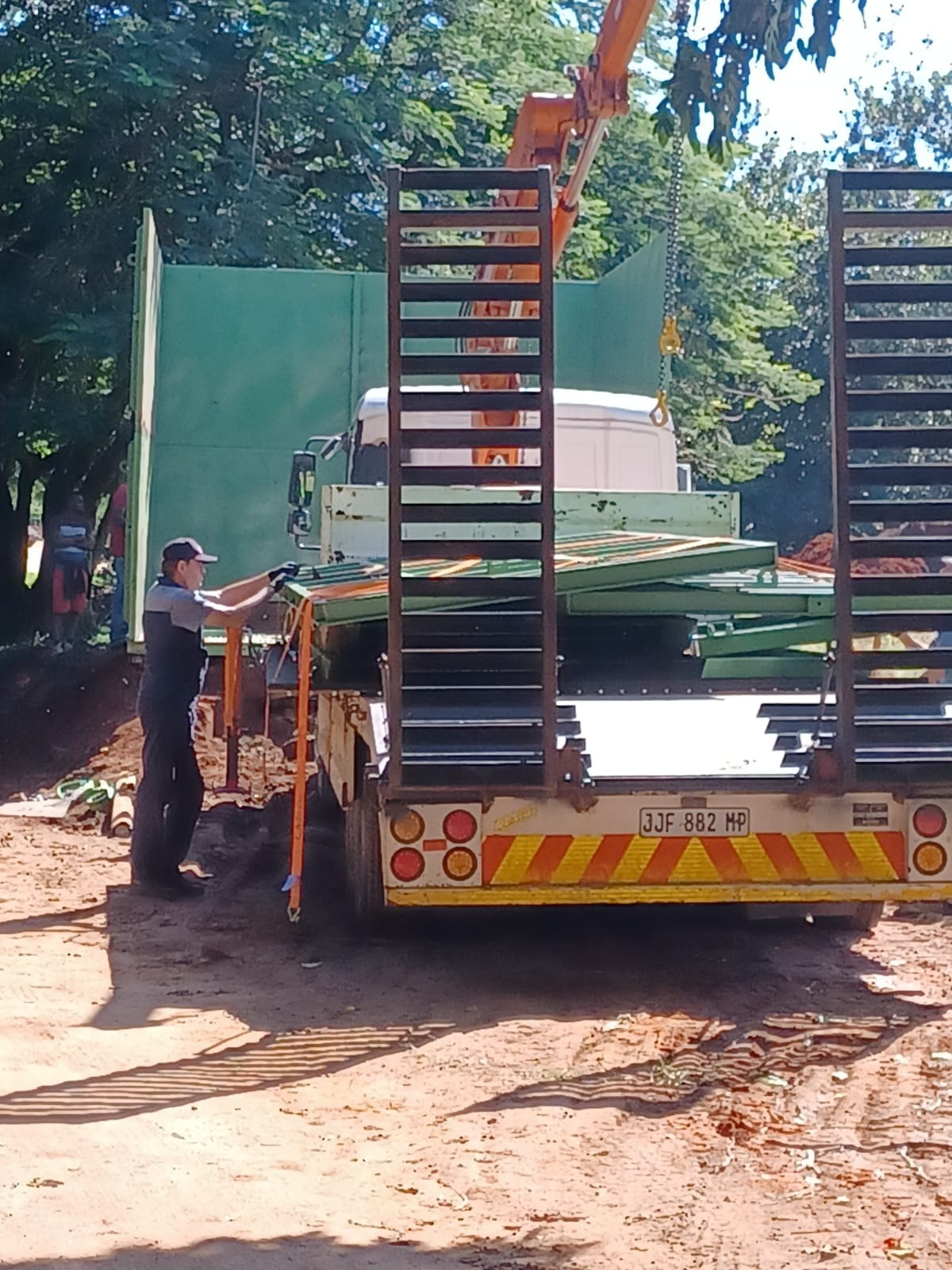
The truck hired to transport the elephants. (Photo: Supplied)
Pickover didn’t accept the claim of a pesticide risk since relocation was planned before spraying took place. She also contested the claim that Hazyview or Lamloch were sanctuaries.
“A true wildlife sanctuary,” she said, “is a safe place where wild animals that have been injured or legitimately rescued from abuse may live in peace and dignity and where they will not be bred, exploited commercially, traded or coerced. These places are not sanctuaries.”
Pickover said they had received information that in a previous attempt, the two elephants were loaded into a shipping container and attempted to break out at a Hazyview petrol station, forcing the relocation to be abandoned. Saunders did not respond to a request for comment regarding this incident.
A former employee at Hazyview, who asked not to be named, said she didn’t buy the heartbreak story.
“The elephants were just a way to make money. Saunders seldom came to the sanctuary. He was just interested in the figures. You really need to take everything he says with a grain of salt.
“Hazyview was starting to lose money. That’s why he wanted to move them,” said the former employee.
Pieter Luus, who runs the trucking company hired to transport the elephants, said they appeared to die from handling that went wrong.
“I’m not a vet, but what happened was that the windpipe of the first elephant closed. I’m not sure why the second one died, but I know that both were darted at the same time and that wasn’t clever. You should do it one at a time.”
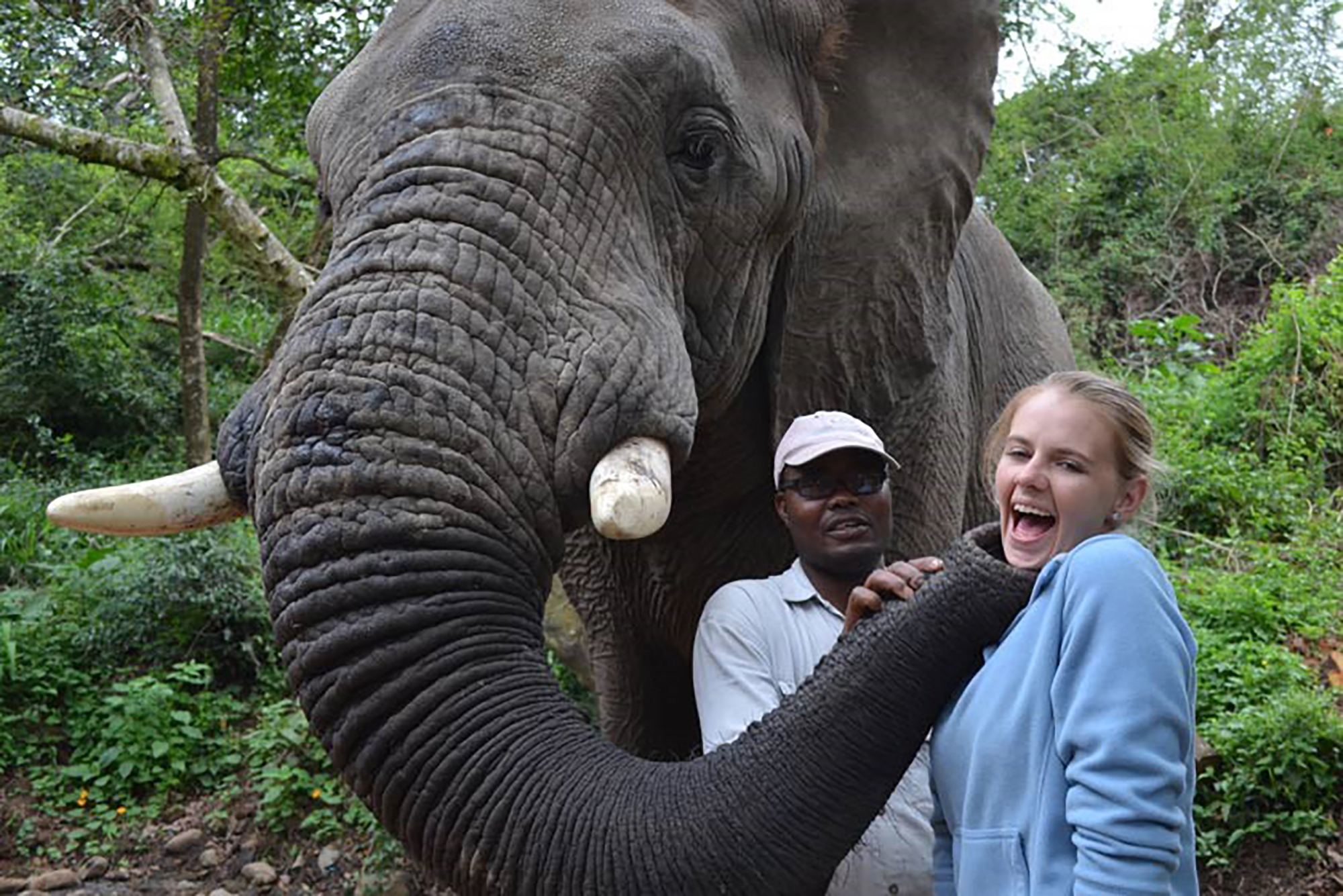
One of the now dead elephants. (Photo: Supplied)
He then used his crane to load the carcasses and take them back across the road to the sanctuary where they were buried in the parking lot. No autopsy was carried out.
Ernst Rohm, a game manager at the Mpumalanga Tourism and Parks Agency, which licenced the relocation, said Douw Grobler, the vet in charge of the move, was too experienced to have overdosed the darting, but supported Loos’ opinion that the animals died from the way they were handled afterwards.
When Daily Maverick contacted the NSPCA, they said they did not know about the incident, but would initiate an inquiry. They said an autopsy needed to be done to establish the reason for the deaths. That might not be possible.
A bystander who witnessed the attempted relocation said the elephants were darted on Saunders’ Hazyview property, then moved across the road to someone else’s property to load them.
“The first elephant to arrive was Kitso, the smaller of the two. He never made it… something went wrong and he died. I thought they would abort the mission, only to find they were bringing Kasper as well. Kasper also never made it.
“The people involved with the mission were extremely hostile and became aggressive when bystanders questioned the process. They buried the elephants in the parking lot without an autopsy. It’s as if they were hiding something.”
Daily Maverick was sent a photo of one of the elephants which had apparently been lifted by its legs using a crane and was lying on its side being winched on to what appeared to be a container. Its trunk was jammed under the ramp. It’s not clear whether the picture was taken before or after the animal died.
Grobler appears to confirm handling problems, although his report was promised but not supplied by the time of publication. In a telephonic interview, he said the operation was “the worst day of my career as a wildlife vet. Taking responsibility and taking the lives of animals in your hands is part of our lives… losing them is not. Especially in this case. I have moved thousands of elephants.
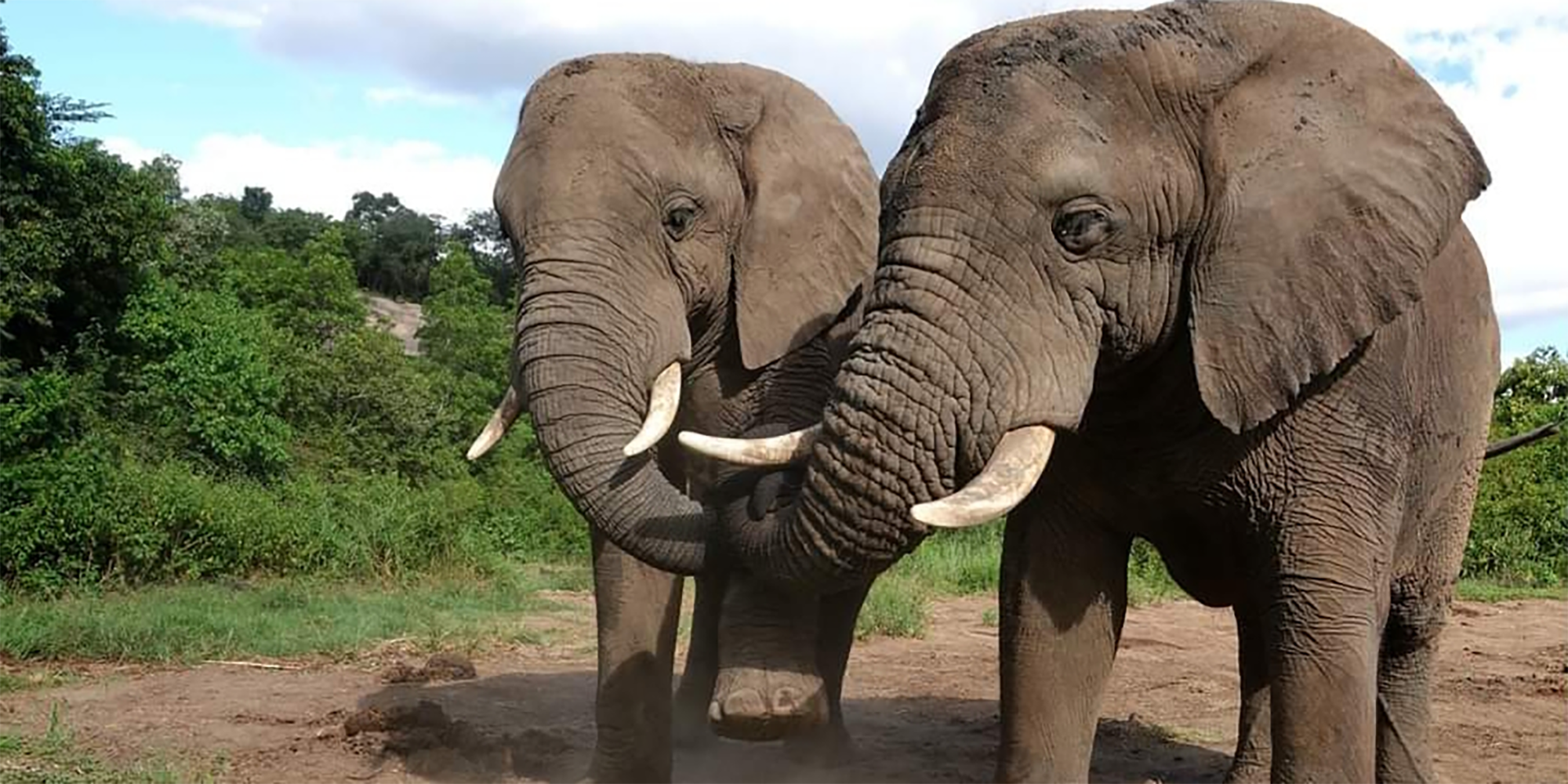
Elephants Kasper and Kitso at the Hazyview Elephant Sanctuary in Mpumalanga. (Photo: Supplied)
“I know what I do and what can be done. In this scenario, we had limits on equipment and performance of equipment and it cost us dearly.”
Grobler must have had several other worst days in the past. He was head of Kruger Park’s game capture unit but was fired in 2001 for the unauthorised sale of animals from the park’s disease-free buffalo breeding project. Then, in 2012, he was charged with possessing and distributing scheduled veterinary medicines.
He was arrested with hunting safari operator Hugo Ras over allegedly supplying a rhino poaching syndicate with M99, a drug also called etorphine which is used to dart rhinos to enable the removal of their horns. The case against Ras dragged on for more than a decade and he was eventually sentenced to 29 years in jail. Grobler turned State witness and escaped prosecution.
Some digging unearthed questions about Saunders as well. He has other elephants on his properties at Hartbeespoort Dam and in Knysna. It has been reported that five came from 24 wild females and six males, ranging between two and five years old, which were forcibly taken from their families in 1998 in the Tuli region of Botswana and sold in South Africa to zoos, circuses and elephant-back safaris.
Footage of the elephants’ training, abuse and suffering was leaked to animal welfare organisations and the public, eliciting outrage. Saunders was reportedly deeply involved in the “training” of some of these elephants.
According to a group of concerned conservation organisations, “Saunders may say that his elephants are treated kindly, but their capture and training is a practice based on totally unacceptable methods and techniques. Ongoing training to keep the elephant ‘obedient’ is done out of sight of the public.”
The South African Tourism Association does not promote or endorse any interaction with wild animals, such as petting of wild cats or interacting with elephants. These are wild animals and they sometimes retaliate.
Incidents
Three incidents have been reported at Saunders’ elephant businesses: in 2013, an elephant handler was trampled to death by two elephants. In another incident, one was gored in the chest. Then, in April 2007, two British tourists were seriously injured by an elephant.
There have also been questions about the suitability of Lamloch for elephants. A report by three of South Africa’s top elephant specialists, Michelle Henley, Marion Garai and Lucy Bates, said that by Saunders’ own admission, elephants on his property would not be free-ranging but “guided by handlers… and supervised”.
“Constant supervision and guidance are not consistent with good welfare practices. Structured programmes, limited ranging guided by handlers and supervision of foraging do not equate to free-ranging.”
Tourists, they said, would “get to see a couple of bored elephants with a broken-down social structure, which may manifest as dangerous behaviour or aggression towards their handlers and the viewers.”
We are left with questions about who is responsible for the botched relocation and why, for a start, were the elephants in captivity? Was Saunders moving the elephants for their wellbeing or because his outfit was losing money which he hoped to recoup at Lamloch?
Were the elephants overdosed by Grobler or were they inexpertly handled in the relocation disaster? Did Loos have elephant relocation experience? Who had overall responsibility for the move?
For two elephants now rotting in a Hazyview parking lot, these questions are no longer relevant. DM/OBP
[hearken id=”daily-maverick/9419″]










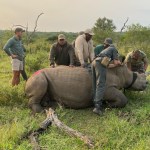








 Become an Insider
Become an Insider
Excellent investigative journalism. One can only hope that those involved get their due desserts.
I guess another worst day in the life of the “vet”.
What vet would allow the elephants to be buried without conducting a postmortem, especially if you were in charge of the dosage that was administered to them.